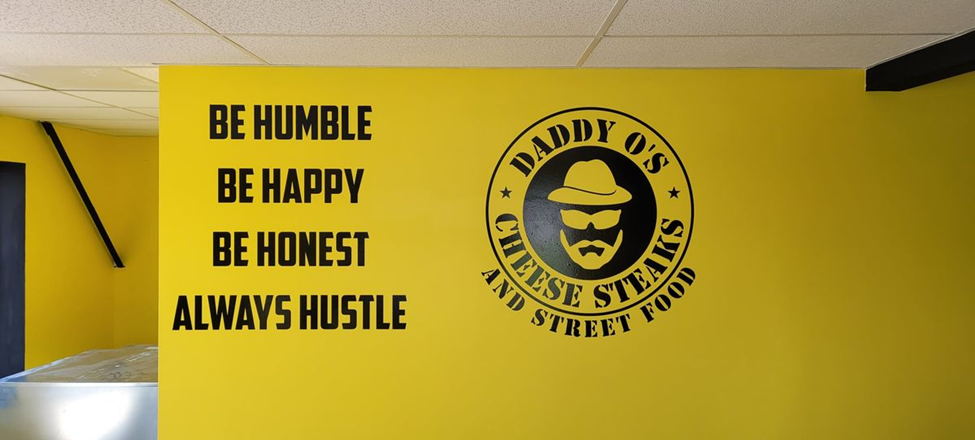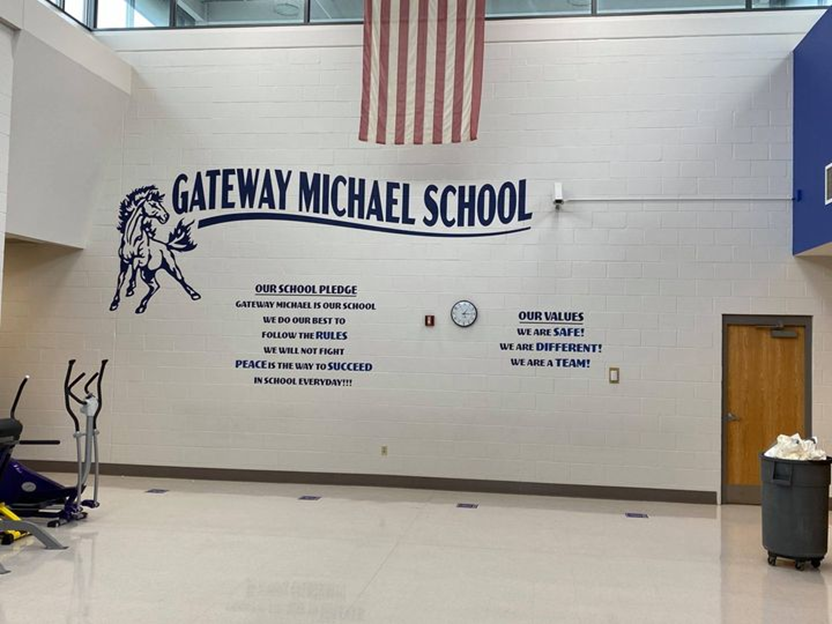Best Practices For Flawless Wall Graphic Installations In St. Louis, MO

Even the most stunning wall graphic design will fail to impress without flawless installation. Bubbles, cracks, splitting and spalling are all bad for your brand image, and they can drastically reduce the service life of your wall graphic, but don’t worry—our wall graphic installers are here to help!
Read on to learn 3 best practices for flawless wall graphic installations, or call (314)-726-5500 to speak directly with a member of the Horizon Sign Company team.
Best Practices For Flawless Wall Graphic Installations In St. Louis, MO
1. Make Sure Your Wall Graphic Installation Space Has The Right Texture
There are 4 broad categories of wall texture identified by wall graphic manufacturers:
- Smooth, having little to no surface variation, which includes most indoor walls. Wall graphics work best on smooth, non-porous surfaces like these.
- Unsmooth, characterized by a mix of high spots and low spots, which can include finished concrete walls, painted wallboards, plaster, or stucco.
- Medium unsmooth, which ranges from light texture (e.g. fine sandpaper or sandblasted textures) to heavy texture (e.g. brick).
- Heavy unsmooth, with unequal distribution and significant variation between high and low spots, like mortar joints and concrete masonry units (CMUs)/porous concrete.
As a general rule, you should strive to find the smoothest possible surface. Too much surface texture prevents the wall graphic adhesive from making proper contact with the substrate, which leaves air pockets and makes your graphic very weak at the “low points.” For most wall graphics, any more than a 1⁄8” variation between high and low spots in the substrate texture will greatly increase the risks of lifting.
2. Be Careful When Installing Wall Graphics On Painted Surfaces
Painted walls tend to be nice and smooth, but that doesn’t mean they’re always suitable for your wall graphic installation. If the wall paint contains any silicone, graffiti-resistant finishes, or texturing additives, it will interfere with your wall graphics’ adhesion.
You’ll also need to watch out for any signs of poor paint-to-substrate bonds, which are surprisingly common in commercial and residential buildings. Obvious signs include:
- Peeling
- Lifting paint
- Bubbling paint
Multiple coats of paint can also be problematic, as the bonds between layers may weaken over time, sloughing your wall graphic off with it! When in doubt, ask our wall graphic experts.
3. Avoid Extreme Temperatures, Excess Sunlight, And Humidity
If your substrate gets hotter than 115°F during the day, your wall graphic adhesive could fail. At the same time, selecting a space that gets too cold can make the adhesive slightly brittle, which can make removal more difficult.
It is also a good idea to avoid walls that get baked in sunlight all day long, as long-term exposure to UV rays can cause some wall graphics to fade.
Finally, steer clear of humid areas and walls that lack an effective moisture barrier, like masonry walls, as moisture can affect the quality of your installation and cause lifting or spalling during freeze-and-thaw cycles.
Get More Help With Wall Graphic Installation: Consult With Our Team In St. Louis, MO

To schedule a free wall graphic consultation with our in-house design, manufacturing, and installation experts, call (314)-726-5500 or fill out our online contact form.
Back

